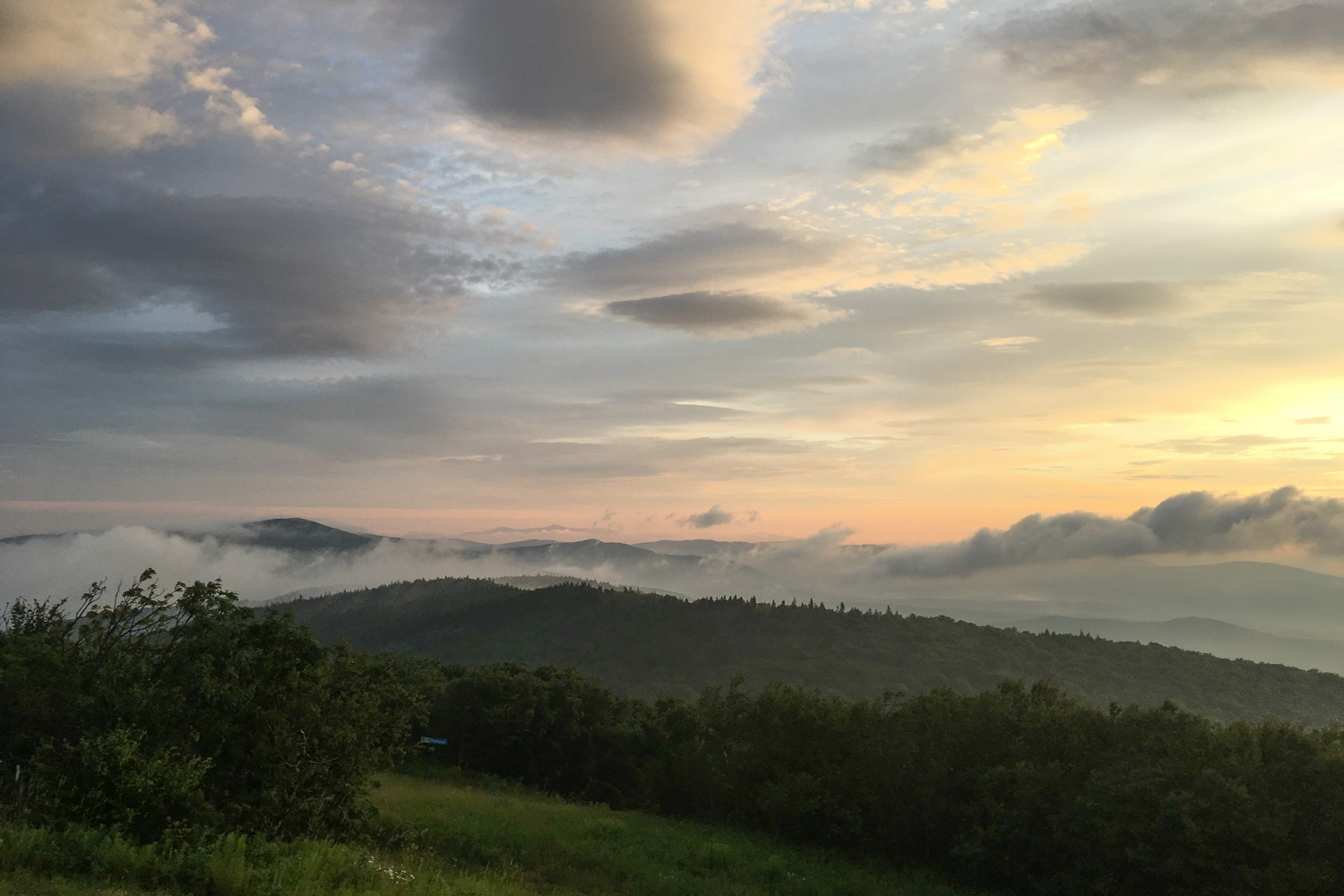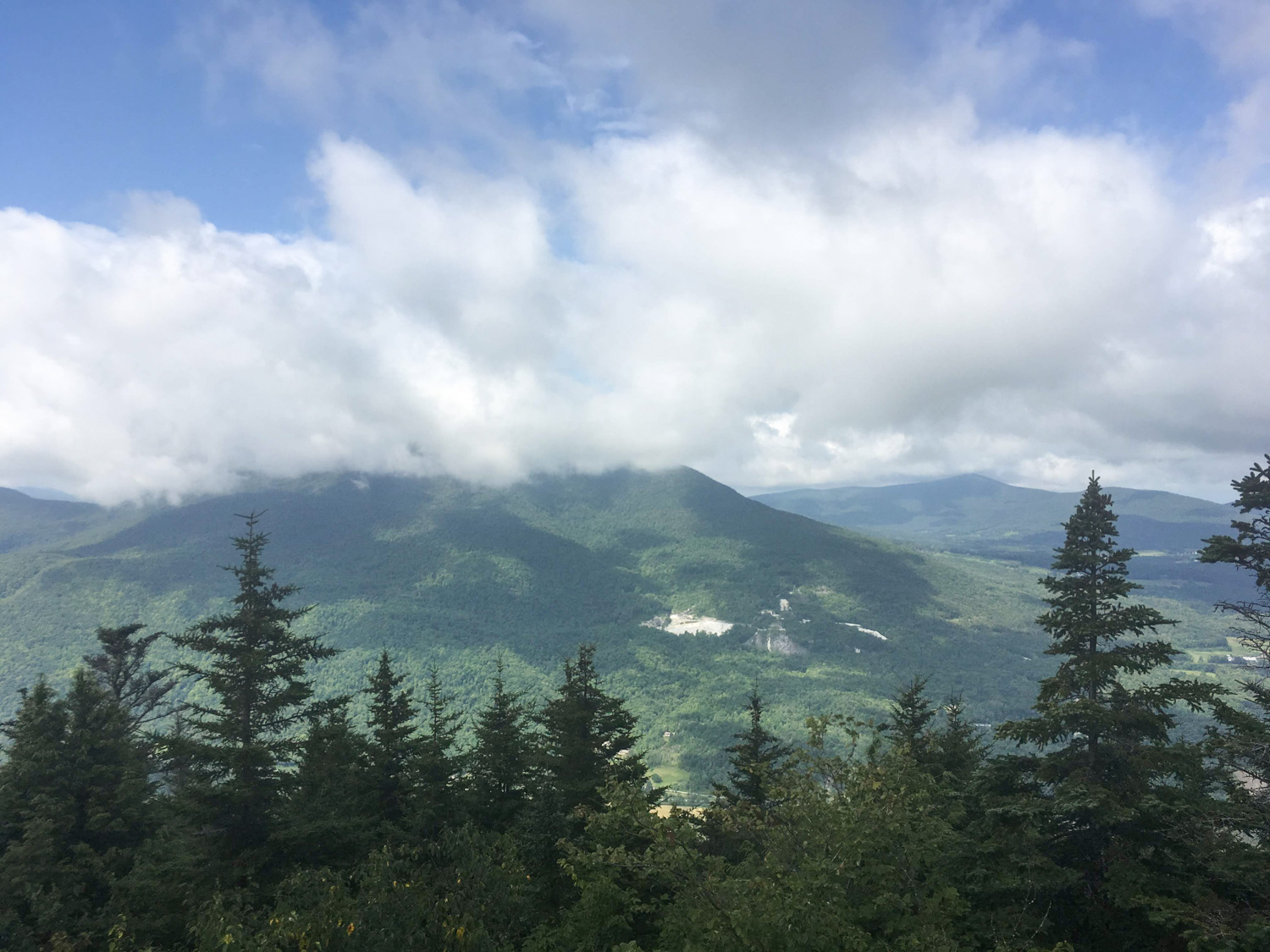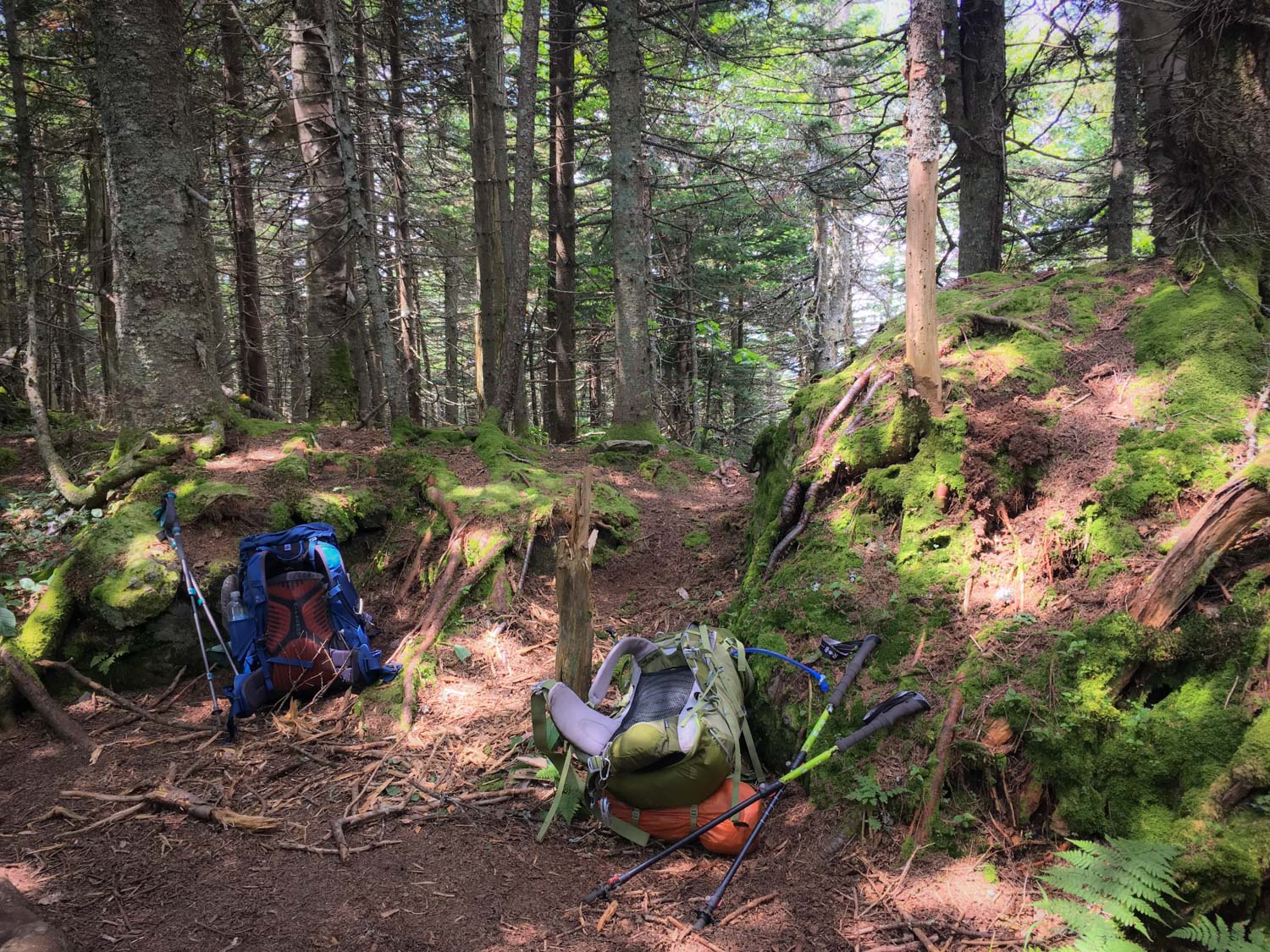Section Hiking the Long Trail

Section Hiking the Long Trail
Vermont
Words and photos by Bethany Clarke
The Long Trail is the oldest long-distance hiking trail in the United States. Affectionately called the green tunnel, its route is lined with maple, beech, and oak trees and paved with rocks and mud.
This path traverses the Green Mountains, which run along the center “spine” of Vermont from the Massachusetts border to the Canadian one. Historically, the Greens were inhabited by the Western Abenaki or “People of the Dawn” who had a special relationship with the mountains. According to the Abenaki, mountaintops often held significance as liminal spaces, or the place between two realms where people could go to perceive the divine.
A rugged landscape
Today the Long Trail extends 272 miles along the ridges, peaks, and river valleys of Vermont. In this landscape, it holds a reputation as one of the most rugged trails on the East Coast, if not the United States. Its rock slides, steep slopes, and gushing rivers can provide many challenges for those who choose to hike it. (Vermont seems to take a hands-off approach to trail maintenance, so some of the trail is badly worn.)
But it also provides many rewards. You can see whitetail deer, black bears, fox, porcupines, beavers, moose, peregrine falcons and a lifetime’s worth of squirrels, chipmunks, and chickadees. The views from the summits of Mount Mansfield, Camel’s Hump, Stratton Mountain, Killington, and Mount Abraham are huge highlights.
Campsites along the way
There are approximately 70 backcountry campsites and many of them include shelters—which makes camping one of the easiest and most fun parts of the trail. With shelters every five miles or so, there are plenty of options for hiking different distances. If it rains, you can cut the day short and if you have good weather and energy, you may hike further than planned. We were even able to camp in some unexpected places such as the Stratton Mountain ski patrol lodge and on the side of a cliff where I woke up to an amazing view of fog dusting the tops of the pines.
A social experience for hikers of all types
Coinciding with the Appalachian Trail for 104 miles in the southern section and so the trail culture is very social and community-oriented. In 2018, 200,000 hikers traversed the Long Trail. Most of them were section hikers and day hikers. Thru-hiking the trail from end to end usually takes about 22 days if you average 12 miles per day. That mileage is manageable for someone who does day hikes over steep terrain on a regular basis.
Why section hike?
The Long Trail is ideal for section hiking because there are many road crossings and parking lots where you can stage cars at either end of your chosen route. My hiking partner and I chose to section hike because we didn’t have much disposable income and needed to work for most of the summer. At first, section hiking allowed us to try out backpacking and all our gear to see if we liked it. After we got that figured out, it became more about having flexibility and fitting in hikes whenever we could get time off. For anyone who needs to keep their day job, but also their sense of adventure, section hiking is the way to go!
Recommended Sections
Overnight: Do the 20 miles from Clarendon Gorge where the trail crosses Route 103 and camping at the base of Killington Peak in the Governor Clement Shelter. You can complete your ascent of Killington the next day and descend to your exit at Sherburn Pass.
Long Weekend: Start at Kelley Stand Road and get off at Clarendon Gorge, a 45-mile section that takes you over Stratton Mountain and over Bear Mountain which doesn’t have a view but features rock gardens along its forested ridge.
One week: Go from the Brandon Gap, over Camel’s Hump and Mount Mansfield, then down to the Lamoille River Valley at Route 15. The terrain is challenging, so this one is best to do when you’ve already put some miles on your legs. But it’s worth it. These views are some of the best on the trail.

Be prepared for:
- Bugs: The mosquitoes and black flies are mean! Luckily, this isn’t the end of the world. Just remember to bring your bug spray and a bug net if you plan on sleeping in the shelters instead of a tent.
- Mud: Hiking in June can be particularly treacherous due to the large amounts of runoff and the lack of water bars on trail. It’s helpful to wear lightweight sneakers that will dry more quickly than boots and to take advantage of the river crossings to wash off your feet and legs.
- Cold: June is probably the earliest you can hit the trail and if you do so, be prepared for chilly nights. Layers are key! I usually did a long sleeve base layer topped by fleece, top and bottom! Plus a warm wool hat and jumping jacks before snuggling up in my tent.
- Crowded Shelters: For those who choose to hike later in the summer, when the bugs, mud, and cold are gone, be prepared for the trails and shelters to be full of hikers. This time is when the bubbles of Appalachian Trail hikers come through and it is good to plan short days in order to make sure you get shelter or tent space on the miles that overlap.
Staying equipped en route
I chose to section hike the trail for 3-5 day stints, so I packed all my food at home and brought it with me, usually ending my hikes hungry and anywhere from 20 minutes to an hour from a nearby deli or country store. Downloading an app like Guthook can be really helpful for people who want more certainty about where to find nearby grocery stores, restaurants, and bathrooms, and hostels. It’s your choice whether or not to take a tent. I feel safe in mine, so I always brought it, but if you want to save on weight, you could easily get by without due to the high number of shelters.
My takeaways from section hiking
- Hike with a friend! My hiking partner helped assuage a lot of my fears and self-doubts about backpacking. She had them too, it turned out. But planning and hiking together gave us the confidence to try something new.
- Plan hikes as far in advance as possible so you can make sure no other commitments get in the way. Once you have it on the calendar, it’s easier to save that space for hiking and hiking only.
- Camp at the trailhead the night before you hike. Especially when we were staging cars at each end of our section, it was nice to be able to do that first thing in the morning and start hiking early.
- Remember that your hike is for you. We often hiked amongst people who were more experienced and faster than us. When I got discouraged by my self-comparisons, I’d remind myself that I was hiking to witness the beauty of nature and to get to know myself better, not to be part of a competition.

A mountaintop sunset view from the Long Trail.
The Long Trail as a liminal space
Liminal Space is a space beyond a boundary or threshold: an area of the unknown, a place of transition. It’s like the car ride between an old apartment and a new one or the time between finding you have a dream and realizing it. By choosing to be in the mountains—climbing, summiting, and descending—bearing witness to them, we visit the liminal spaces inside of ourselves.
My time on Long Trail was about making the transition out of graduate school and out of a relationship with someone who was no longer right for me. I wasn’t sure where I was headed after the summer’s end, but I trusted that by taking one step at a time, I would find my way.
When we live outside clear definition, whether it’s for a weekend of a few minutes, we are more malleable and more in tune with the magic of the world around us. For me, that outside space is the mountains. There, I can choose to step into liminality. I can learn to take off the veils of falsity, confusion, and misunderstanding. I can learn to see human truth, beauty and brilliance.
Bethany Clarke is a writer from a lake town in New Hampshire. She teaches writing classes, admires abandoned buildings in the woods, and will say hi to your dog first. You can find her writing on Instagram @bethanymclarke and on her blog bethanymclarke.com.



Be the first to comment